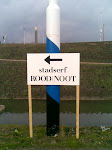Vanaf zijn zeventiende houdt Arthur Schitzler nauwkeurig een dagboek bij. In de jaren voor zijn dood bewerkt hij dit tot een (onaffe) autobiografie. Schnitzler is Wener in hart en nieren, vanaf zijn geboorte in 1862 woont hij in de stad en maakt deel uit van het intellectuele leven in de koffiehuizen en theaters. In zijn boeken duikt Wenen veelvuldig op. Het wemelt er van de Weense villa’s, straten en uitgaansgelegenheden als Sacher (van de beroemde taart) of de Prater, een pretpark op een eiland in de rivier de Donau.
In zijn dagboek brengt Schnitzler verslag uit van zijn familieleven, zijn talrijke liefdes en de verschillende kringen waar hij zich in begeeft. Ook houdt hij er zijn theater- en concertbezoeken in bij, gecompleteerd met het aantal orgasmen dat hij beleeft. Verslaafd aan de liefde en kunstliefhebber, dat is Schnitzler in een paar woorden. […]
lees verder
Posts tonen met het label de leesclub nr23. Alle posts tonen
Posts tonen met het label de leesclub nr23. Alle posts tonen
vrijdag 28 oktober 2011
arthur schnitzler
The Austrian and German drama are often confused. In reality, they have nothing in common but language, and the difference between them may be measured by the difference between the spirit of Berlin and the spirit of Vienna. The German playwrights reflect phases of their national temperment clearly enough. Sudermann, for example, is always heavily Prussian. The stucco palaces of Die Ehre and Sodoms Ende belong essentially to upper middle class Berlin; the farms and country houses of Johannisfeuer and Das Glück im Winkel are as distinctively North German as their pastors are Protestant. Hauptmann's legendary plays are built of German mythology, and even his Silesian peasant dramas gravitate naturally towards the Northern capital. Wedekind's laborious introspection and substantial satire are German to the core. […]
lees verder
lees verder
arthur schnitzler
[…] Schnitzler's early literary reputation was largely gained through his plays, starting from ANATOL (1893), about the "sexual neurasthenia" of a young man. His work, which was daring for his time, shows deep understanding of the unconscious and the subconscious - he has often been classified as the creative equivalent of his friend Sigmund Freud, who admitted in 1906 in a letter to Schnitzler, that he recognized his "double" in the author. Schnitzlser's stories of sexual intrigue and portrayals of women were well received by a faithful circle of readers. […]
gehele artikel
gehele artikel
arthur schnitzler
Abonneren op:
Posts (Atom)


.jpg)

